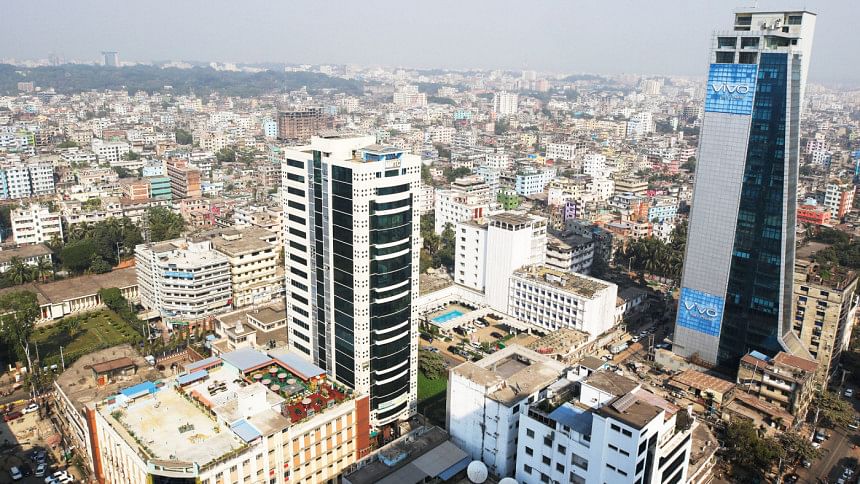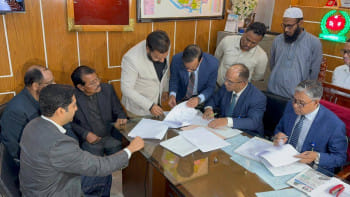The Thriving Real Estate: Landscape of Chattogram

Chattogram, often regarded as the country's second capital and its most dynamic business hub, is witnessing a thriving real estate landscape that offers more affordable apartment prices than Dhaka. Its strategic proximity to the Chattogram port provides the city with a distinct advantage, driving substantial growth in the real estate sector and setting the stage for even greater expansion in the future.
"Chattogram enjoys a distinct advantage over Dhaka in that it does not face the complications associated with detailed area plans concerning Floor Area Ratio (FAR). Our developer members have successfully completed over 2,000 buildings and handed over more than 40,000 apartments to customers. Given that most rod and cement factories, as well as export and import hubs, are located here, the potential for further real estate development in Chattogram is strong. This concentration results in lower transportation costs, making building materials more affordable compared to Dhaka and other regions," said Md. Wahiduzzaman, President of REHAB.
REHAB has around 100 members in Chattogram, with approximately 80 companies actively operating at present. The most sought-after areas in the city, where demand for flats and apartments is high among affluent and upper-class buyers, include Khulshi (South and North), Nasirabad, Mehedibag, OR Nizam Road, and Panchlaish, where land prices are elevated due to limited availability.
Additionally, the Agrabad commercial area sees strong demand for both commercial spaces and residential flats. The real estate sector is also significantly expanding into areas such as Jamal Khan Bazar, Lal Khan Bazar, Chowkbazar, Baddarhat, Kotwali, Halishahar, Bakalia, Muradnagar, Colonel Hat, and Chandgaon, where property prices are relatively lower.
Chattogram's strategic position as a business center, combined with ongoing development projects, has increased the demand for housing facilities. This demand is particularly strong in areas close to major industrial projects, where employment opportunities are growing. Real estate insiders estimate that approximately 5,000 residential and commercial units will be delivered annually in Chattogram, resulting in substantial sales in both volume and monetary value.

Notably, the real estate sector has been expanding significantly beyond the metropolitan areas of Chattogram, especially in regions adjacent to mega projects. The country's largest economic zone is being established in Mirsarai, Chattogram, while another, funded by China, is under development in the Anwara upazila. These zones are expected to drive subsequent housing developments in the surrounding areas.
"Major developments, such as the Bangabandhu Industrial City and the Karnaphuli tunnel, are enhancing the city's potential and attracting both local and foreign investments. The market, which previously catered to the city's central areas, is now witnessing significant expansion into upazilas like Mirsarai, Sitakunda, and Anwara. Real estate developers are investing heavily, and the sector is expected to reach Tk 20,000 crore in investments over the next 10 years," shares Md. Alinur Rahman, CEO of Rupayan Housing Estate Ltd.
In addition to growth and expansion, developers are now focusing on using environmentally friendly materials and adopting sustainable practices in designing upscale, eco-friendly facilities.
"Creating a sustainable city is part of the Sustainable Development Goals (SDG), but it's not something a developer can achieve alone. However, we can ensure our buildings are sustainable by promoting sustainable lifestyles for their inhabitants and using eco-friendly materials in construction. We are already taking initiatives in this regard and hope other developers will join us in making Chattogram a sustainable city through collective effort," said Tanvir Shahriar Rimon, CEO (Real Estate & Sea Fishing) at Rancon.
However, the real estate sector in Chattogram faces several challenges, many of which mirror those of the broader industry, such as limited land availability, high construction costs, and regulatory hurdles. While infrastructure projects are expanding, ensuring the provision of civic amenities in newly developed areas remains a key challenge.
"The development of Chattogram was not well planned, with bridges constructed in areas where they were unnecessary, leading to significant traffic congestion. However, if the government allocates land through public-private partnerships (PPP), developers can offer more affordable flats for middle- and lower-middle-class people, as land prices are a major factor in the real estate market. Additionally, improvements in the traffic, road, and transportation systems are essential to attract and sustain further expansion," adds Md. Wahiduzzaman.

 For all latest news, follow The Daily Star's Google News channel.
For all latest news, follow The Daily Star's Google News channel. 



Comments